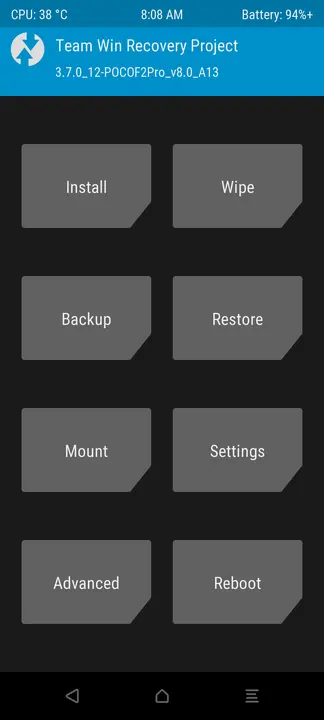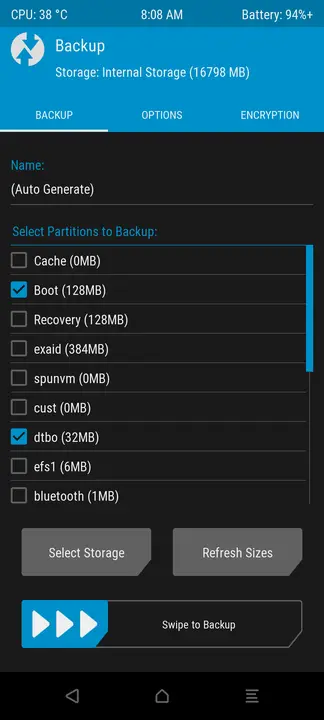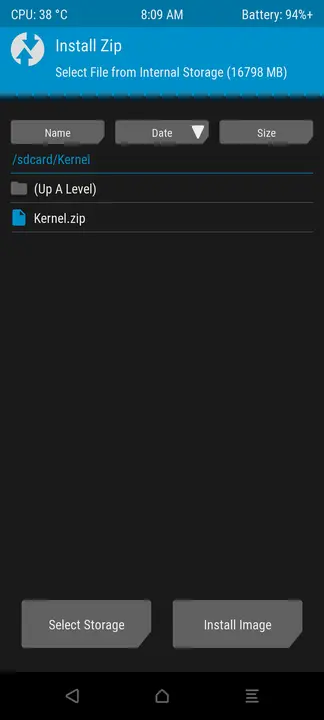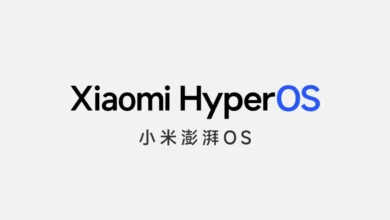
Custom Kernel Downloads | Poco F3/ Mi 11X/ Redmi K40 (Alioth)
The kernel is key to Android performance – it’s the software that lets the hardware and operating system work together seamlessly. On the Poco F3, the kernel carefully controls the powerful Snapdragon 870 processor based on what you’re doing – gaming, browsing, etc.
For intense tasks like 3D mobile games, the kernel ramps up CPU and GPU frequencies so more calculations happen per second, generating slick graphics but also consuming more battery. During lighter use like social media, it slows things down to save power.
What is a custom kernel?
Now to “custom kernels”. Developers can tweak the F3’s original kernel software to optimize it even further. A customized kernel specifically built for the Snapdragon 870 chipset could potentially give your device an extra performance boost.

However, sometimes custom kernels can cause battery drain, performance drops, break hardware features, or even soft-brick the device. So you have to be careful choosing custom kernels for your device. Flashing kernels made for different devices can corrupt the storage and cause hard bricks to your device.
Read more on Android Custom kernel from a user’s perspective.
Pros and Cons of installing a custom kernel on Poco F3/ Mi 11X/ Redmi K40 (Alioth)
Pros:
- Improved performance – Custom kernels can optimize the Snapdragon 870 even further, increasing speed and responsiveness for a smoother user experience. Gaming kernels can improve the gaming experience a lot.
- Better battery life – Expert kernel tweaks could potentially improve battery efficiency compared to the stock software.
- Latest updates/patches – Custom kernels are often kept up-to-date with the newest optimizations and security enhancements.
Cons:
- Potential instability – Improperly modified kernels can lead to random reboots, freezes, or app crashes.
- Chance of bootloops – A buggy kernel could cause the phone to get stuck endlessly booting up.
- Voided warranty – Altering system software often invalidates manufacturer warranty coverage.
- Hardware issues – Incorrect settings could deactivate camera/Bluetooth/NFC functions.
- Brick risk – Flashing a completely incompatible kernel can permanently damage the device.
- Shorter battery span – Excessive CPU frequency boosts impact battery duration over time.
Check also: How to Download and Install HyperOS on Mi 11X/Poco F3/Redmi K40
Requirements for installing custom kernels on Poco F3/ Mi 11X/ Redmi K40 (Alioth)
Installing a custom kernel isn’t a thing for normal users. But if you think you’re nerd enough to take the risk, then you are welcome. Make sure your device meets the following criteria before proceeding ahead:
- A Poco F3/ Mi 11X/ Redmi K40 device with unlocked bootloader
- A custom recovery like TWRP, Orangefox Recovery, PBRP, etc. installed.
- Make sure the Kernel you are about to flash supports your current ROM (such as MIUI, or AOSP)
Custom kernels for Poco F3/ Mi 11X/ Redmi K40 (Alioth)
The Poco F3 kernel source code is openly available though, letting modifyers experiment. We have a lot of options when choosing a kernel for Poco F3. Below, we have listed some selected ones’ that got a good amount of attention from Poco F3 users. Read the information carefully before installing a custom kernel.
RealKing Kernel For Poco F3/ Mi 11X/ Redmi K40 (Alioth)

RealKing Kernel is one of the latest and actively maintained kernels for Poco F3. The kernel makes a good amount of optimizations. This kernel can be considered as a gaming kernel for Poco F3/ Mi 11X/ Redmi K40 devices.
- Maintainer: @Rohail33
- Android Support: 11/ 12/ 13/ 14
- ROM support: MIUI/ AOSP
- Superuser: KSU
- Support
Realking Kernel releases
Changelogs - v15.2
- Upstreamed Kernel to v4.19.306
- Kernelsu: add path_umount implementation.
- drivers: xiaomi_touch: add a sysfs node to bump touch sample rate
- Added and Enabled Linux Random Number generator (v45)
- Backported LRNG v45 from linux 5.15
- added MGLRU
- [PATCH] msm_serial_hs: Make thread RT to improve Bluetooth performance
- drivers: mdss: queue work on system_power_efficient_wqdrivers/mmc/core: sdio.c - fix for better deep sleep
- soc: qcom: watchdog_v2: Fix missing new lines after watchdog bite
- thermal: Add support for new xiaomi thermal message nodes
- thermal: msm_lmh_dcvs: fix a lockdep splat
- Fixed apollo's error pop up on first boot
Notes:
- Container zip
- All roms should boot fine.
- Miui and Aosp both supported
- Kernel Built with Latest Zyc clang-18.
- Merged Linux Upstream v4.19.301, v4.19.302, v4.19.303, v4.19.304, v4.19.305
- Merged Latest CLO tag : LA.UM.9.12.r1-17900-SMxx50.QSSI14.0
- soc: qcom: watchdog_v2: Optimize IPI pings to reduce system jitter
- Suppressed Some log spams
- Optimized Clang build cortex-a77 and kryo 585
- Enabled back Gpu throttling ( some users were facing a lot of heating during gayming no it shall be solved.. plus users can always disable that through smartpack kernel manager )
- bluetooth and qtr ; work on power efficient working queues
- improvements in ufs
- Many Many More underhood Optimisations are done. Which are not worth mentioning since it's not user friendly
Notes
- Container zip
- All roms should boot fine.
- Miui and Aosp both supported
Changelogs V14.6
- Merged Latest Linux tag v4.19.298
- Merge latest CLO tag 'LA.UM.9.12.r1-17400-SMxx50.QSSI13.0' into main tree
- Updated Kernel-Su to latest v0.7.1
- Improvements in Zram
- thermal: Increase thermal trip points to 16
- gpu: drm: Use power efficient workingqueues
- techpack: use more power efficient workingqueues
- Fixes in Touch drivers ( for those people who use an after market LCD display instead of OLED display in their alioth , now the kernel will work fine )
- ufs: Scrap Qualcomm's PM QoS implementation
- ufs: Add simple IRQ-affined PM QoS operations
- ufs: call single_release to avoid memory leak
- proc: Don't let Google Camera run in the background
- power: supply: Use power efficient workingqueues
- crypto: Build with O3 flags
- workqueue: queue everything on system's power efficient wq
- block: queue work on power efficient wq
- Switch to 250hz frequency timer
- Many more underhood Optimisations
MagicTime Kernel For Poco F3/ Mi 11X/ Redmi K40 (Alioth)

MagicTime Kernel is a new custom kernel for Poco F3. Its first build for Poco F3 was released in December 2023. So it’s a fresh new kernel with very promising features for Alioth.
Basic Kernel Details
- Maintainer: @TIMISONG
- Android Support: 11-14
- ROM support: AOSP/ AOSPA
- Superuser: KSU- included
- Support
MagicTime Kernel releases
Changelogs 1.0.5f
- Clean/Revert some commits
- Merged 4.19.305
- PM / wakeup: Avoid excessive s2idle wake attempts in pm_system wakeup()
- PM / freezer: Abort suspend when there's a wakeup while freezing
- PM / suspend: Clear wakeups before running PM callbacks
- PM / sleep: Skip O0M killer toggles when kernel is compiled for Android
- vfs: Eliminate dynamic memory allocation in getcwd) system call
- msm: kgsl: Relax CPU latency requirements to save power
- debug: fix pcie device wakeup reason is unknown issue
- msm_geni_serial: reduce wakelock timeout from ISR to 100ms
- PM / freezer: Reduce freeze timeout to 1 second for Android
- msm_geni_serial: make ioctl always exclusive
- cpuidle: Ipm-levels: Remove debug event logging
- adreno_tz: Fix GPU target frequency calculation for high refresh rates
- drivers: power: supply: Disable battery capacity learning
- Full Changelog
Changelog V1.0.4r
- Merged 4.19.303
- Merged latest CLO tag LA.UM.9.12.r1-17900-SMxx50.QSSI14.0
- Merged latest changes from LOS
- Revert some changes from 1.0.3r/1.0.3f
- workqueue: change permissions to allow root control of wq_power_efficient toggle
- platform: ipa: Use power efficient workingqueues
- mm: vmstat: Use more power efficient workingqueues
- power: supply: Use power efficient workingqueues
- thermal_core: Use power efficient workqueue
- msm: kgsl: Run kgsl-workqueue as a high prio wq
- gpu: drm: use power efficient workingqueues
- block: queue work on power efficient wq
- techpack: use power efficient workingqueues
- workqueue: queue everything on system's power efficient wq
- config: sm8250-common: Enable power efficient wq
Nexus Kernel for Poco F3/ Mi 11X/ Redmi K40 (Alioth)

If you count some popular kernels for Android, the Nexus kernel will be one of them. It’s very popular for its stability. It has been serving many Android devices for a long time. Nexus kernel is a great combination of both performance and power efficiency.
Basic Kernel Details
- Maintainer: @NotZeetaa
- Android Support: 11-14
- ROM support: AOSP only
- Superuser: KSU- included.
- To use KernelSU just rename the kernel zip name to “-ksu” and flash!
- Flashing via Adb sideload won’t work
- Support
Nexus Kernel releases
Changelogs v26
- Built with latest Neutron Clang + LTO + MLGO
- Merge tag 'LA.UM.9.12.r1-17600.04-SMxx50.QSSI14.0'
- Merged tag 'ASB-2023-12-05_4.19-stable' (4.19.300)
- Updated KernelSU (v0.7.2)
- Cleaned up display drivers (Reduces latency + fixes some AOD problems)
- Hardcoded zRAM size to 4GB
- Imported arm64 V8 ASM lz4 decompression acceleration
- Enabled polly optimizations & inline optimization
- Cleaned up UFS driver
- Fixed random reboots due to modem
- Cleaned up scheduler (CASS + PELT)
- Updated alioth touch firmware (From miui_ALIOTH_V14.0.8.0.TKHCNXM)
- Enabled WQ Power Efficient (Reduces battery usage)
- implemented KCAL
- Avoid various dynamic memory allocations (To avoid overhead on that driver)
- Cleaned up and optimized defconfigs (Disabled useless debuggings and more)
- And alot more...
Changelogs v25
- Built with Aosp Clang 17.0.4 (With MLGO support, improves app launch performance by 0.55% on ARM64)
- Merged 4.19.297
- Merged tag 'LA.UM.9.12.r1-17400-SMxx50.QSSI13.0'
- Nuked Efficient frequencies
- Enabled Power Efficient
- Update kernel su to v0.7.1
- Enable Polly optimizations + inline optimizations
- Schedulel overall optimizations
- Implement IRQ-affined PM QoS for reduced latency on UFS
- Switch to BBR TCP + fq_codel qdisc
- Fuse backports
- Binder backports
- "Optimized" gpu
- And alot more...
More Poco F3/ Mi 11X/ Redmi K40 (Alioth) kernel builds will be updated over time. So stay tuned.
Check also: [ROM] MiUi Guffy Edition 14.0.7.0 for Poco F3/Redmi K40/Mi 11X (alioth)
Guides to install a custom Kernel on Poco F3/ Mi 11X/ Redmi K40
Installing a custom kernel is easier than you might think. Follow the easy guide to install a custom kernel on your Poco F3 (alioth).
Step 1: Make sure the Kernel you are about to flash supports your current ROM (such as MIUI, or AOSP)(Read details)
Step 2: Download the Kernel ZIP file from the official sources we have given to you.
Step 3: Boot Into Custom Recovery

Press and Hold the Volume up and Power key at the same time until you see the recovery logo.
Step 4: Backing up necessary partitions
Make sure you have backed up the boot partition so that you can restore the stock kernel if anything goes wrong. For good measure, backup the dtbo partition (basically dtbo.img file) too. This is because sometimes you may face issues like broken multi-touch, refresh rate issues, etc. Restoring the dtbo partition can fix those problems.
Step 5: Flashing the Kernel ZIP file
In your recovery browse to the Kernel ZIP file and install it as a flashable zip.
Step 6: Rebooting the device
Go to the reboot menu from your recovery and choose the System Reboot option.

Congratulations! You have successfully installed a custom kernel on your Poco F3. Now wait for the device to complete the reboot.
If your device doesn’t boot don’t panic. First, reboot into recovery ( follow Step 3) and restore the boot and dtbo partition. Then reboot into the system. This will install the stock kernel and your phone will boot normally.
The Final Verdict
A custom kernel can improve the device performance by a quite margin. If you are a gamer, you will surely appreciate the performance increase by installing a good gaming-centric kernel on your Poco F3. But it is not recommended if you don’t have experience or knowledge of installing custom ROMs and such topics.
Muhammad Menhajul Islam (also known as ‘Minhaz’) is a B.Sc student studying Mathematics in Govt. B.M. Collage, Barishal, Bangladesh. He has been a Android die-hard fan since 2015.







